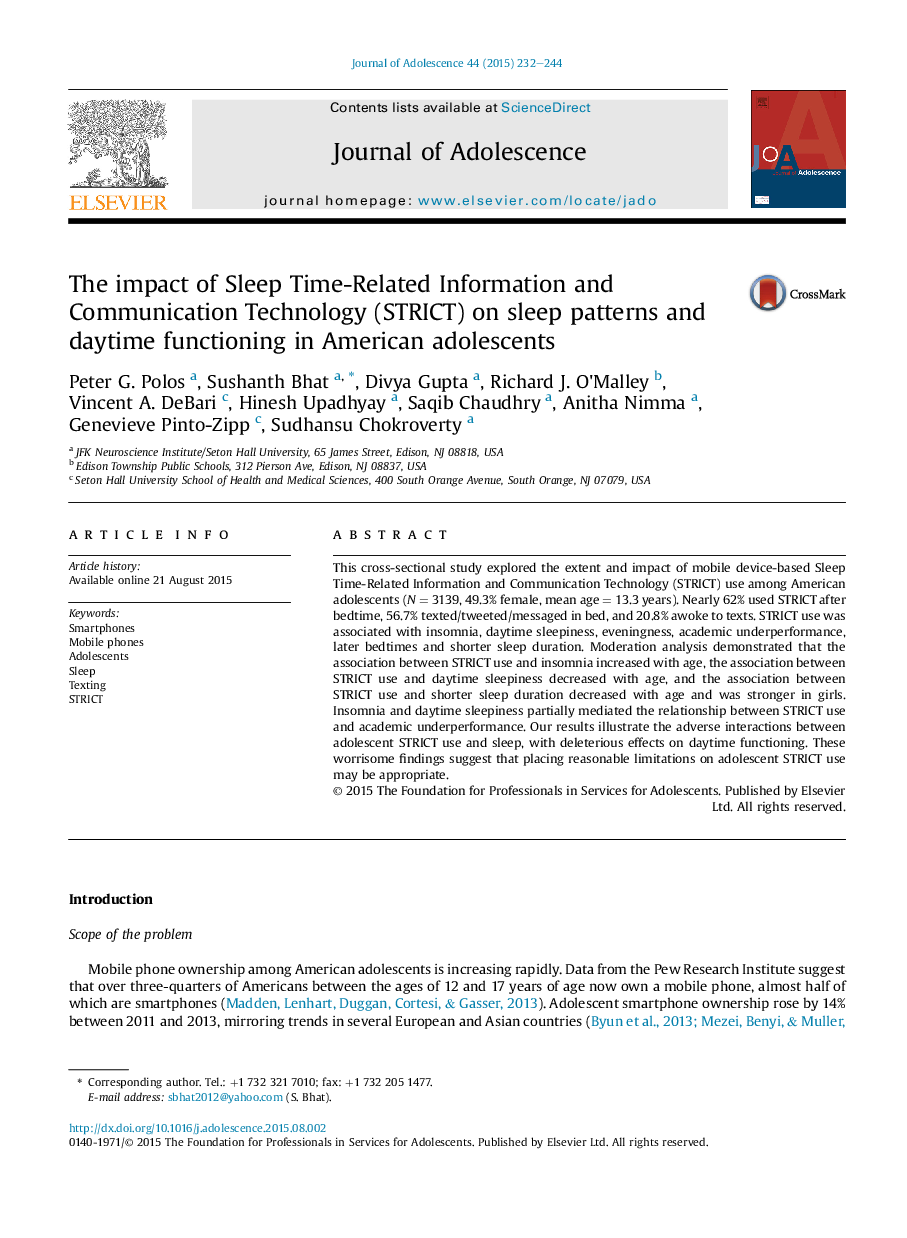| Article ID | Journal | Published Year | Pages | File Type |
|---|---|---|---|---|
| 880617 | Journal of Adolescence | 2015 | 13 Pages |
This cross-sectional study explored the extent and impact of mobile device-based Sleep Time-Related Information and Communication Technology (STRICT) use among American adolescents (N = 3139, 49.3% female, mean age = 13.3 years). Nearly 62% used STRICT after bedtime, 56.7% texted/tweeted/messaged in bed, and 20.8% awoke to texts. STRICT use was associated with insomnia, daytime sleepiness, eveningness, academic underperformance, later bedtimes and shorter sleep duration. Moderation analysis demonstrated that the association between STRICT use and insomnia increased with age, the association between STRICT use and daytime sleepiness decreased with age, and the association between STRICT use and shorter sleep duration decreased with age and was stronger in girls. Insomnia and daytime sleepiness partially mediated the relationship between STRICT use and academic underperformance. Our results illustrate the adverse interactions between adolescent STRICT use and sleep, with deleterious effects on daytime functioning. These worrisome findings suggest that placing reasonable limitations on adolescent STRICT use may be appropriate.
